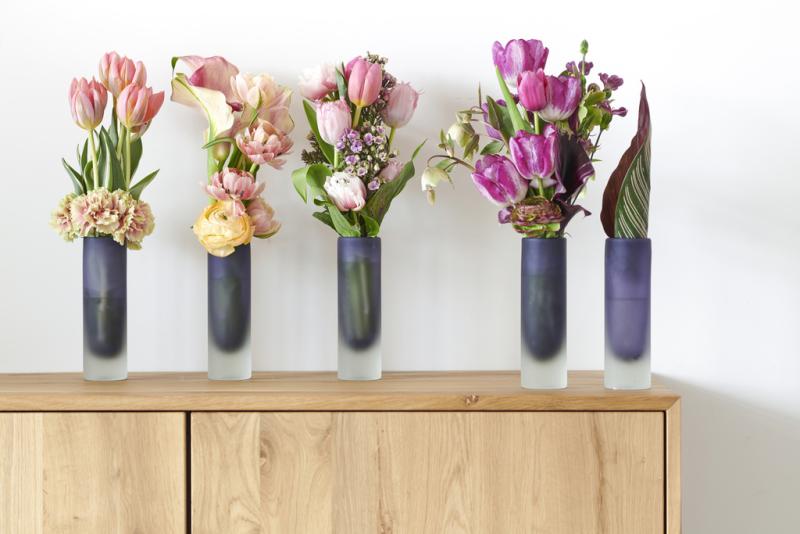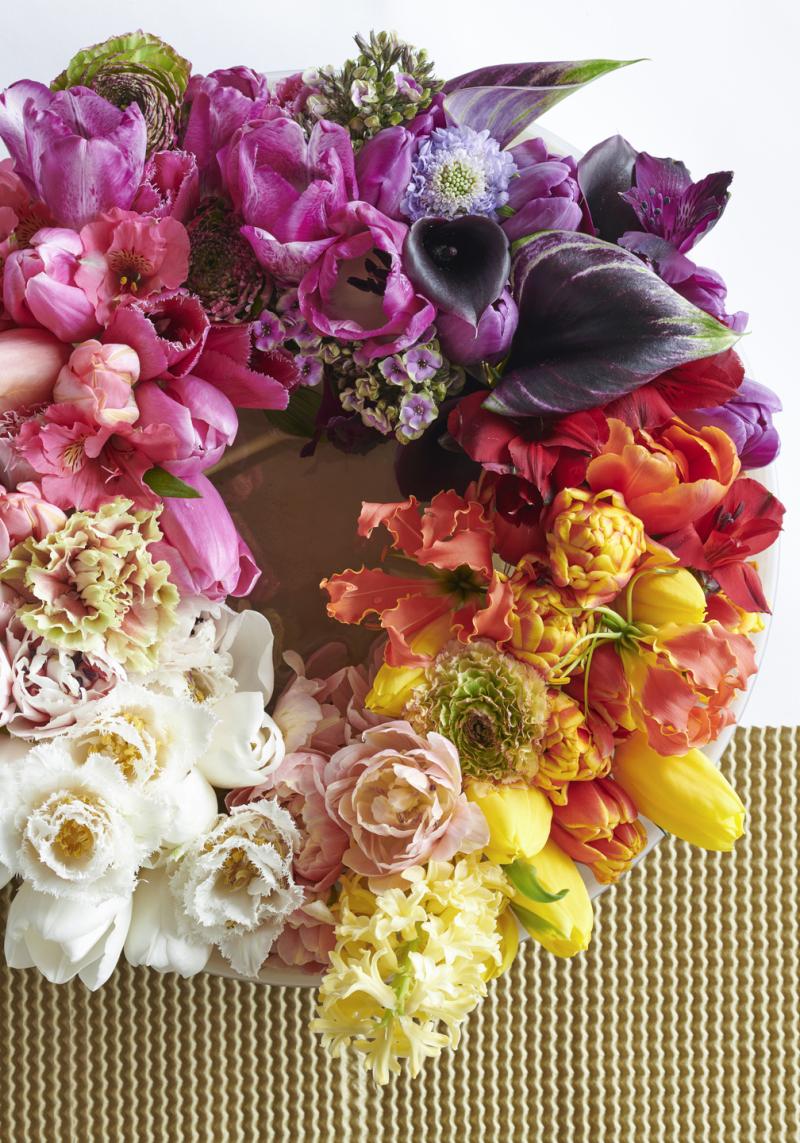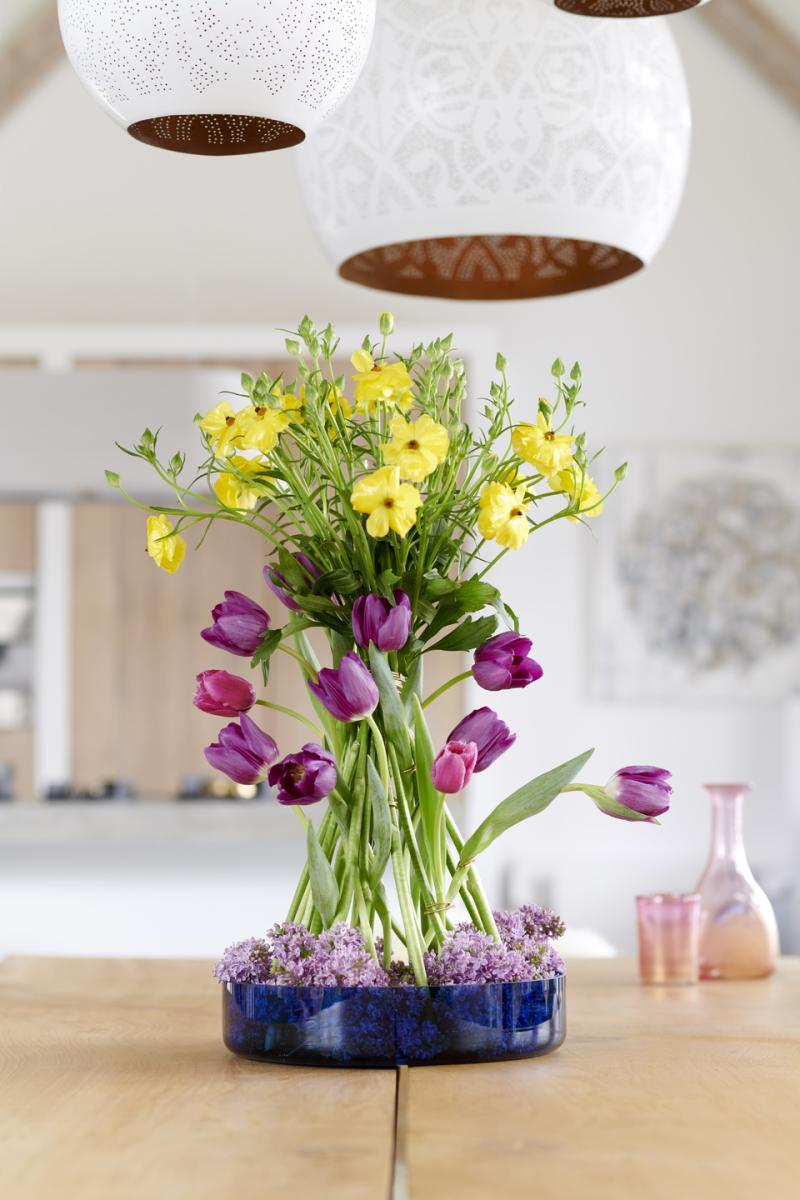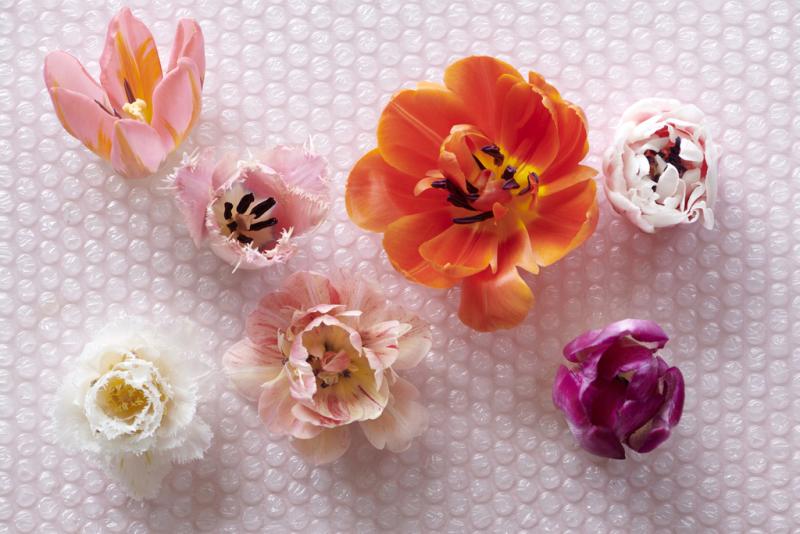Tulip: In the January Flower Agenda
Fresh green foliage, unique shapes and fabulous colours: the tulip (Tulipa) is the ideal way to kickstart the year and bring a bit of spring into the home. Because the bulbs require more time to bloom outdoors, tulips that are grown as cut flowers get special treatment. The grower gives the bulbs an artificial winter period, after which the higher temperatures in the greenhouse make them think that it’s spring and so start flowering. The bulbs are therefore really tricked and ‘forced’ to flower in the greenhouse so that florists and consumers can enjoy these spring flowers early.
Origin
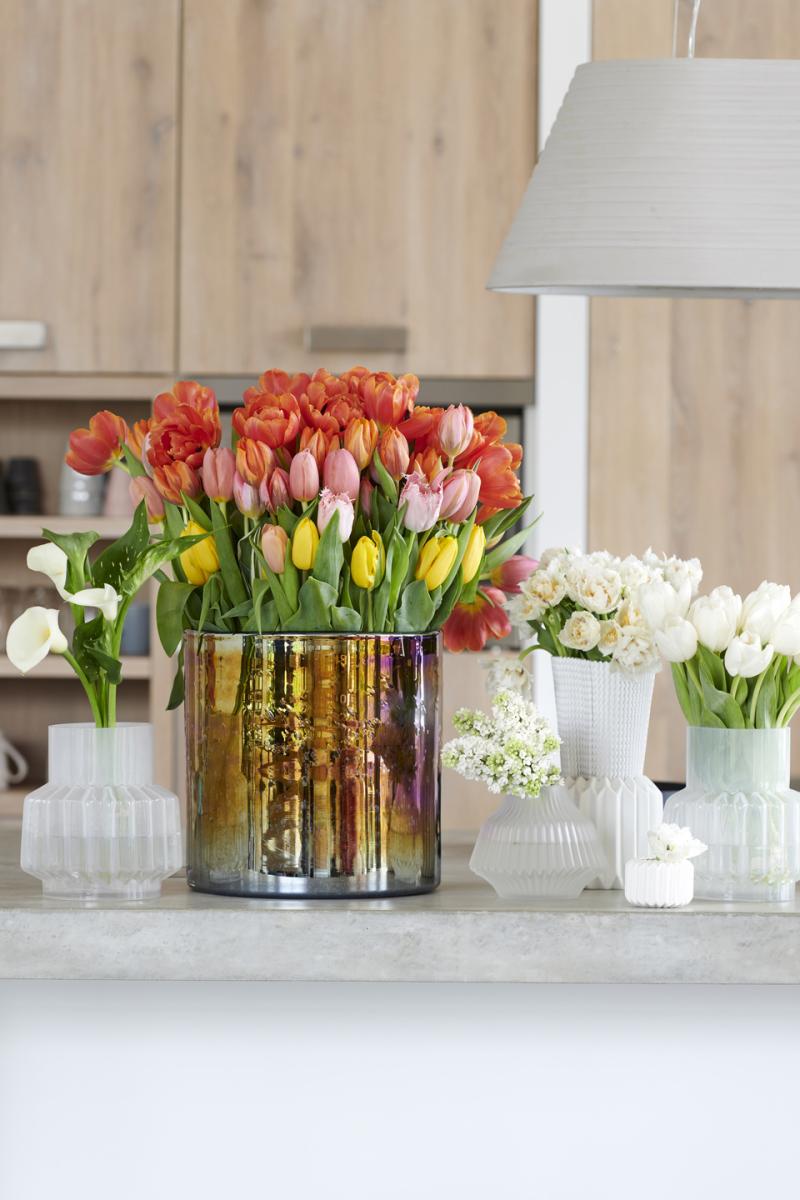
Assortment
With over 600 cultivars the choice of tulips is extensive. The flowers are often even-coloured, but are also available with flames, coloured stripes and coloured edges. Tulips are classified by flower shape: single and double flowered, parrot tulips, lily-flowered tulips or in the form of fringed or Crispa tulips. The double tulips that resemble peonies are particularly unusual.
What to look for when buying tulips
- The weight determines the tulip’s appearance. Large bulbs produce the heaviest tulips with the biggest flowers.
- The height and stage of ripeness must correspond. This stage of ripeness is expressed in numbers from 1 (unripe) to 5 (ripe).
- When buying tulips the flowers must be free of pests and diseases. Tulips can sometimes show botrytis or yellow leaf tips. Weak, shiny spots on the stem indicate ‘tippers’ or ‘water stems’, which will not be sturdy in the vase.
- Some growers pre-treat tulips in order to reduce the growth of the stems and counteract leaf yellowing.
Care tips for professionals
- Store tulips for as little time as possible.
- Storing tulips cool prevents them from ripening further. A storage temperature of 2 - 5°C is best.
- On arrival in the shop wrap the tulips tightly in paper and leave them to straighten up in a shallow layer of water. This prevents them from growing crooked. Cut off the white part at the bottom of the stem in order to make it easier to take up water.
- Work clean and dry, avoid condensation or getting the flower and leaves wet because of the risk of botrytis, which greatly detracts from the decorative value.
- Cut tulips can continue to grow by 5 to 15 cm: something to take into account when incorporating tulips in bouquets and arrangements.
- Tulips can only be combined with the daffodils if you use Bulb Flower Chrysal.
Display tips for professionals
Create colour blocks on the shelf or on the shop floor with bundles of tulips and give unusual cultivars a separate place in order to emphasise that these are specialities. The 2019 trend is for very traditional or very contemporary arrangements. For traditional arrangements think of the atmosphere of an old still-life: deep, saturated colours in a jug or earthenware pot or a tulip vase. The modern style is full of twists: tulips where only the flowers are visible above the edge of the opaque vase, or which are placed so deep in a transparent vase that it almost looks like a terrarium. Their smooth stems make tulips ideal entry level flowers for millennials and centennials who are ill at ease with leaves and forms. Remove some of the green foliage and present the tulips individually in small bottles and glasses for an Instagrammable display for this new, interesting target group.
Care tips for customers
- When choosing a vase, allow for a few centimetres growth.
- Make sure the inside of the vase is clean, and fill it with cold tap water. Add the supplied cut flower food to the water.
- Make sure there are no leaves hanging in the water. Remove the bottom leaves if necessary. Cut 2 to 3 cm off of the stem.
- Place the vase in a draught-free spot, not in the sun or near a source of heat but as cool as possible. Do not place the vase near fruit; this will accelerate the ageing of the flowers.
- Tulips drink a lot of water. Regularly check the water level in the vase and top up with cold tap water if necessary.
- Trim drooping tulips again, wrap them in strong paper and leave them to drink their fill in the water for an hour. They will then be beautifully upright again.
Inspiration & information
Inspiring images of every flower on the Flower Agenda have been produced in line with the Horticulture Sector Trends 2019 (Groenbranche Trends 2019). These trends are a translation of the latest consumer trends and are specifically aimed at the horticulture sector for use both indoors and outdoors. If you would like to find out more about the Flower Agenda, find out more.
The tulip will be on the Flower Agenda in January 2019. You can download and use these inspiration images free of charge if you credit Funnyhowflowersdothat.co.uk.
Image credits
Download images free of charge and credit Funnyhowflowersdothat.co.uk
Instagram: @howflowersdothat
Facebook: @funnyhowflowersdothat
Twitter: @flowersdothat

